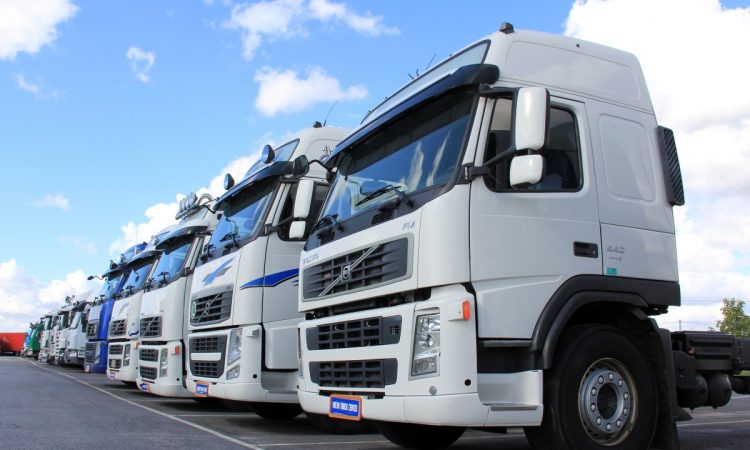
When it comes to logistics and transport, the HGV heavy goods vehicle is an indispensable workhorse, moving goods across Singapore’s bustling cityscape with remarkable efficiency. These vehicles, essential to industries ranging from retail to construction, are more than just oversized trucks—they are the backbone of supply chains, ensuring that products, materials, and essentials arrive where they are needed, when they are needed.
What Is an HGV Heavy Goods Vehicle?
Let’s start with the basics. An HGV heavy goods vehicle, also known as a lorry or truck in everyday language, refers to a vehicle with a gross weight exceeding 3.5 tonnes. These vehicles are designed for transporting large loads over long distances and are categorised based on size, load capacity, and function.
In Singapore, where land is limited, and efficiency is paramount, HGVs play a crucial role in connecting distribution centres, warehouses, and construction sites. They form an essential link in the logistics chain, ensuring that businesses run smoothly and consumers get their goods on time.
Key Features of HGV Heavy Goods Vehicles
HGVs aren’t just larger versions of regular vehicles; they come equipped with features tailored for their heavy-duty roles:
Powerful engines:
Designed to handle immense loads, HGV engines boast high torque and reliability.
Customisable trailers:
From refrigerated units to flatbeds, trailers are adaptable to meet various industry needs.
Advanced braking systems:
Safety is critical, with features like anti-lock braking systems (ABS) and electronic stability control.
Eco-friendly designs:
Many modern HGVs now meet stringent emissions standards, aligning with Singapore’s sustainability goals.
Why HGVs Matter in Singapore’s Economy

HGVs are the unsung heroes of Singapore’s economy, facilitating the smooth movement of goods in a land-scarce nation heavily reliant on imports. According to the Land Transport Authority (LTA), there were over 140,000 commercial vehicles on Singapore’s roads as of 2023, with HGVs forming a significant percentage.
These vehicles support industries such as:
Construction:
Transporting materials like cement, steel, and equipment.
Retail and E-commerce:
Delivering goods from warehouses to stores or directly to consumers.
Food Supply Chains:
Ensuring perishable goods like fruits and vegetables reach their destinations fresh and intact.
Without HGVs, the gears of Singapore’s economy would grind to a halt, disrupting both businesses and daily life.
Regulations Governing HGVs in Singapore
Operating an HGV in Singapore isn’t just a matter of hopping behind the wheel. These vehicles are subject to strict regulations to ensure road safety and environmental compliance:
1. Driver Licensing:
Drivers must hold a valid Class 4 or Class 5 licence to operate HGVs.
2. Vehicle Maintenance:
Regular inspections are mandatory to meet roadworthiness standards.
3. Weight Limits:
Overloading an HGV can result in hefty fines, as it poses a safety risk and damages road infrastructure.
4. Emission Standards:
Singapore has implemented Euro VI emission standards, requiring HGVs to adopt cleaner technologies to reduce air pollution.
Advantages of Using HGVs
The versatility and efficiency of HGVs make them an ideal choice for businesses across sectors. Key benefits include:
High Load Capacity:
Capable of transporting bulk quantities, reducing the need for multiple trips.
Cost Efficiency:
Larger loads per trip translate to lower transportation costs per unit of goods.
Reliability:
Equipped to handle long distances and various terrains without compromising safety or performance.
Adaptability:
From hazardous materials to oversized equipment, there’s an HGV setup for virtually every need.
Challenges of Operating HGVs in Singapore
Despite their advantages, HGVs come with their own set of challenges in a densely populated city-state like Singapore:
Traffic Congestion:
Navigating through Singapore’s busy roads can be a time-consuming ordeal for HGV drivers.
High Operating Costs:
From diesel prices to maintenance fees, running an HGV is no small expense.
Limited Parking and Loading Zones:
With urban spaces at a premium, finding suitable locations for parking and loading can be difficult.
Stringent Regulations:
Meeting safety and environmental compliance requires ongoing investments in technology and training.
The Future of HGVs: Sustainability and Innovation
As Singapore moves towards its Green Plan 2030, HGVs are also evolving. Manufacturers and operators are embracing eco-friendly technologies to reduce the carbon footprint of heavy transport. Key developments include:
Electric and Hybrid HGVs:
These vehicles promise lower emissions and quieter operations, making them ideal for urban areas.
Autonomous Technology:
Driverless HGVs are being tested globally, offering potential for enhanced safety and efficiency.
Improved Fuel Efficiency:
Innovations in engine design and aerodynamics aim to maximise mileage and reduce costs.
Singapore’s government has also introduced incentives for businesses adopting cleaner vehicle technologies, aligning with global trends towards sustainability.
Tips for Businesses Relying on HGVs
For companies using HGVs in their operations, optimising performance and compliance is critical. Consider these tips:
Invest in Training:
Ensure drivers are well-trained in safety protocols and efficient driving techniques.
Regular Maintenance:
Conduct routine checks to minimise breakdowns and ensure regulatory compliance.
Plan Routes Strategically:
Use route optimisation software to save time and fuel.
Adopt Green Technology:
Explore grants and incentives for upgrading to environmentally friendly HGVs.
Why HGV Heavy Goods Vehicles Are Indispensable
The HGV heavy goods vehicle is more than just a transport solution; it’s a symbol of reliability and efficiency, powering industries and connecting communities. In Singapore’s fast-paced and ever-evolving landscape, these vehicles ensure that goods flow seamlessly, contributing to economic stability and growth.
So the next time you see an HGV on the road, remember—it’s not just a truck; it’s a vital cog in the machinery of modern life. Whether delivering essentials to your doorstep or transporting materials to build skyscrapers, the humble HGV keeps Singapore moving forward.




